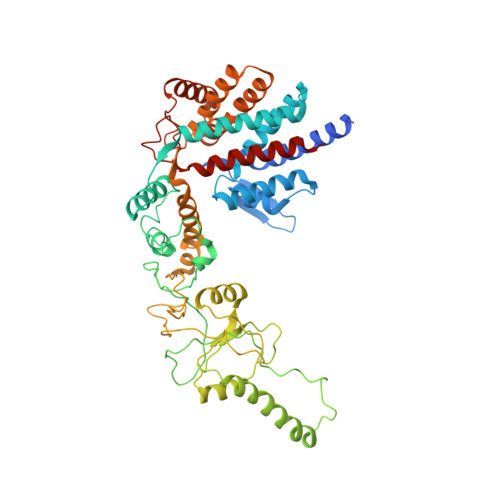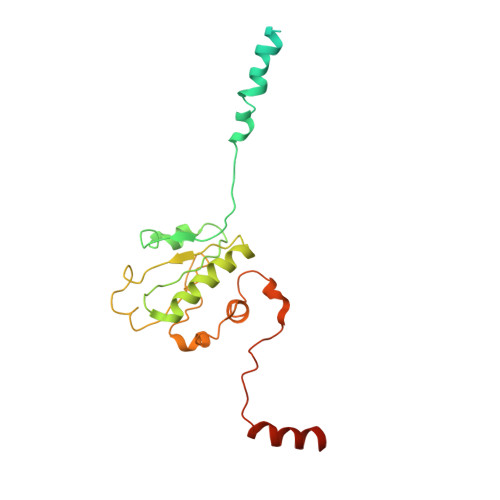A structural vista of phosducin-like PhLP2A-chaperonin TRiC cooperation during the ATP-driven folding cycle.
Park, J., Kim, H., Gestaut, D., Lim, S., Opoku-Nsiah, K.A., Leitner, A., Frydman, J., Roh, S.H.(2024) Nat Commun 15: 1007-1007
- PubMed: 38307855
- DOI: https://doi.org/10.1038/s41467-024-45242-x
- Primary Citation of Related Structures:
8I1U, 8I6J, 8I9Q, 8I9U, 8IB8 - PubMed Abstract:
Proper cellular proteostasis, essential for viability, requires a network of chaperones and cochaperones. ATP-dependent chaperonin TRiC/CCT partners with cochaperones prefoldin (PFD) and phosducin-like proteins (PhLPs) to facilitate folding of essential eukaryotic proteins. Using cryoEM and biochemical analyses, we determine the ATP-driven cycle of TRiC-PFD-PhLP2A interaction. PhLP2A binds to open apo-TRiC through polyvalent domain-specific contacts with its chamber's equatorial and apical regions. PhLP2A N-terminal H3-domain binding to subunits CCT3/4 apical domains displace PFD from TRiC. ATP-induced TRiC closure rearranges the contacts of PhLP2A domains within the closed chamber. In the presence of substrate, actin and PhLP2A segregate into opposing chambers, each binding to positively charged inner surface residues from CCT1/3/6/8. Notably, actin induces a conformational change in PhLP2A, causing its N-terminal helices to extend across the inter-ring interface to directly contact a hydrophobic groove in actin. Our findings reveal an ATP-driven PhLP2A structural rearrangement cycle within the TRiC chamber to facilitate folding.
Organizational Affiliation:
School of Biological Sciences, Institute of Molecular Biology and Genetics, Seoul National University, Seoul, South Korea.















